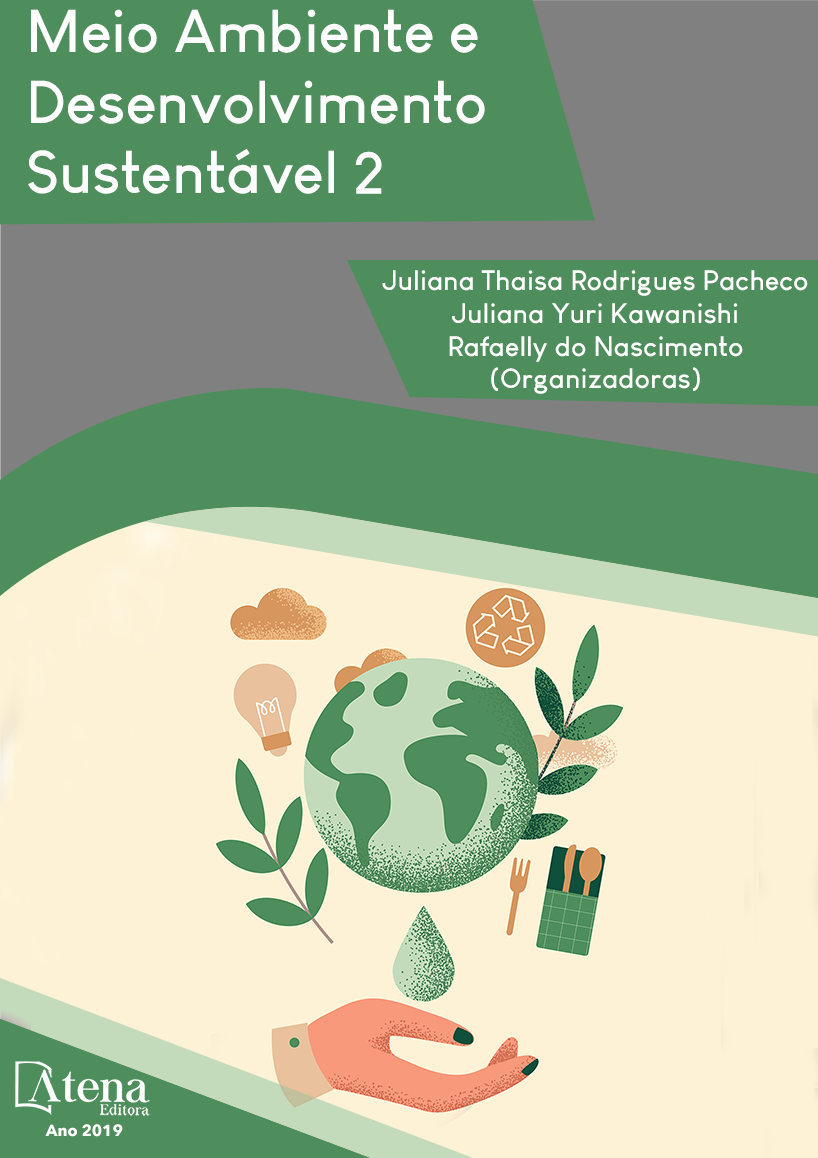
SECAGEM SOLAR DE CASCA DE MARACUJÁ: UMA ALTERNATIVA AMBIENTAL E ECONOMICAMENTE VIÁVEL
O Brasil é o maior produtor de
maracujá e sua destinação ocorre principalmente
para a indústria de polpas e sucos, havendo um
grande acúmulo de resíduos. A suplementação
alimentar com subprodutos da casca do
maracujá é associada a diversos benefícios à
saúde, sendo a secagem solar uma forma de
aumentar a vida útil desses produtos, além de
ser uma tecnologia ecologicamente correta.
Com isso, objetivou-se avaliar a cinética de
secagem solar da casca do maracujá. Frutos
de maracujá adquiridos no mercado público
de Pombal-PB foram higienizados, cortados
em geometria de placas planas, as fatias das
cascas dispostas em secador solar e pesadas
a cada 1 hora até massa constante. Os
cálculos de razão do teor de água (RTA) foram
calculados e os gráficos plotados nos softwares
Statistica e Excel. Pode-se observar um
decréscimo acentuado na temperatura, perda
de massa e umidade, tanto em base úmida
quanto seca, em relação ao tempo, sendo o
modelo polinomial cúbico o que mais se ajustou
a esses parâmetros. Com relação à cinética
de secagem, também observou-se redução
significativa no inicio do processo em virtude
da maior umidade inicial e constância a partir
das quatro horas de secagem, sendo o modelo
de Regressão de crescimento exponencial o
que mais se ajustou. Portanto, conclui-se que
a secagem solar da casca do maracujá é um
processo rápido e eficiente, proporcionando ao
mercado a possibilidade de matéria prima com
maior vida útil para elaboração de subprodutos.
SECAGEM SOLAR DE CASCA DE MARACUJÁ: UMA ALTERNATIVA AMBIENTAL E ECONOMICAMENTE VIÁVEL
-
DOI: 10.22533/at.ed.55019111123
-
Palavras-chave: Modelagem matemática, Passiflora edulis, Secagem solar.
-
Keywords: Mathematical modeling, Passiflora edulis, Solar drying.
-
Abstract:
Brazil is the largest producer of passion fruit and its destination occurs
mainly for the pulp and juice industry, with a large accumulation of residues. Food
supplementation with passion fruit peel by-products is associated with several health
benefits, and solar drying is a way to increase the shelf life of these products, as well as
being an ecologically sound technology. The objective of this study was to evaluate the
solar drying kinetics of passion fruit peel. Passion fruit obtained from the public market
of Pombal-PB was sanitized, cut in flat plate geometry, the slices of the shells arranged
in a solar dryer and weighed every 1 hour until constant mass. Water content ratio
(RTA) calculations were calculated and graphs plotted on Statistica and Excel software.
It can be observed a sharp decrease in temperature, loss of mass and humidity, both
on wet and dry basis, in relation to the time, being the cubic polynomial model the most
adjusted to these parameters. Regarding the drying kinetics, a significant reduction
was also observed at the beginning of the process due to the higher initial humidity and
constancy from the four hours of drying, with the Exponential Growth Regression model
being the most adjusted. Therefore, it is concluded that the solar drying of passion fruit
peel is a fast and efficient process, providing the market with the possibility of raw
material with longer shelf life for the elaboration of byproducts.
-
Número de páginas: 13
- Sinthya Kelly Queiroz Morais
- Alvaro Gustavo Ferreira da Silva
- Dauany De Sousa Oliveira
- Fabricio Alves de Morais
- Raissa Cristina Leandro Vítor
- Jocielys Jovelino Rodrigues
- Álvaro Gustavo Ferreira da Silva


